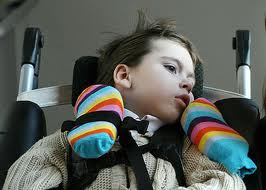Cerebral Palsy (or “CP”) refers to loss or impairment of motor function caused by brain damage. Brain can be suffered from mild to severe damage leading to abnormal development a child’s brain is still developing — before birth, during birth, or immediately after birth. This neurological injury which primarily causes physical impairment involving limitation or loss of function and mobility. The suffered child may experience difficulty with muscle coordination, muscle control, muscle tone, reflexes, balance or posture. They may have difficulty with fine or gross motor skills. Their facial muscles may be affected.which primarily causes physical impairment involving limitation or loss of function and mobility. They experience difficulty with muscle coordination, muscle control, muscle tone, reflexes, balance or posture. They may have difficulty with fine or gross motor skills, oromotor functioning. Their facial muscles may be affected.
This neurological injury which primarily causes physical impairment involving limitation or loss of function and mobility. The suffered child may experience difficulty with muscle coordination, muscle control, muscle tone, reflexes, balance or posture. They may have difficulty with fine or gross motor skills. Their facial muscles may be affected.which primarily causes physical impairment involving limitation or loss of function and mobility. They experience difficulty with muscle coordination, muscle control, muscle tone, reflexes, balance or posture. They may have difficulty with fine or gross motor skills, oromotor functioning. Their facial muscles may be affected.
Cerebral Palsy is generally a physical impairment or disability not a disease caused by brain damage. The provided treatments may not heal the condition but partly recover or manage physical functions. While therapy and adaptive equipment are the primary treatment for cerebral palsy, a child may also require drug therapy and surgical interventions.
Child with particular verebral palsy require additional assistance, help, or technology play role as “special needs” such as access to education, transportation, work settings, government programs, public venues, and housing.
Medical treatment for cerebral palsy is not a one-time treatment cure. Medical needs for those with cerebral palsy are dependent upon severity, extent, level, location and co-mitigating factors and may vary as the child develops and grows into adulthood.
The treatment is not a sole task but the combination of many factors and subjects. It requires a team approach of doctors, neurologists, specialists and therapists along with home care.
